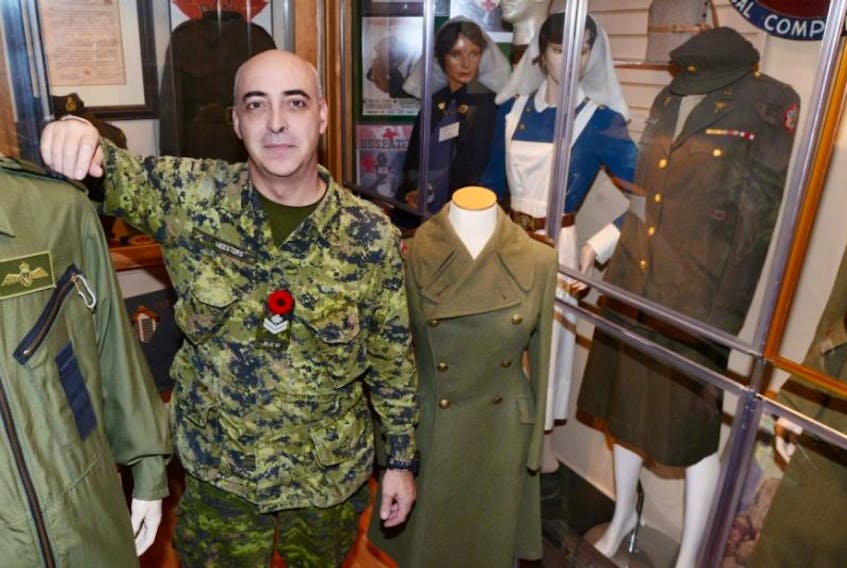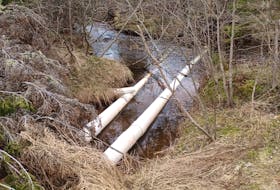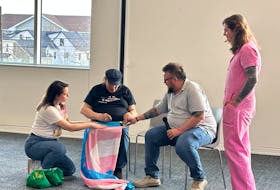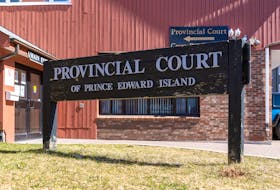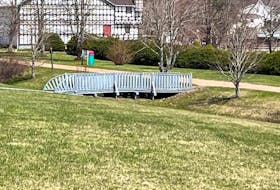The year is 1918. Allied forces had been assaulting the Hindenburg line, Germany’s last line of defence on the western front, for 56 hours.
Edgar Campbell, a 23-year-old P.E.I. native was there, along with other men from the P.E.I. regiment.
The Islanders fought the Germans for every inch of ground, as bullets whizzed by and shells exploded all around them.
Though Campbell was wounded during the fight, shot in the right shoulder and the right hand, the Allies would win the battle and go on to win the war.
This is just the tale of one of the eight regimental battle honours the P.E.I. Regiment has been awarded over its 140 years.
It’s stories of valour, like Campbell’s, that fill the walls of the P.E.I. Regiment Museum in Charlottetown, a collection dedicated to the military history of P.E.I.
Greg Gallant is curator of the museum. He opened it in 1990 because he wanted to tell the tales of P.E.I.'s servicemen and women.
“Our goal is to protect and preserve, and of course tell, P.E.I.’s military story,” he said in an interview.
A big part of that story is the 140 years worth of honours the P.E.I. regiment has collected.
Soldiers from the regiment have fought in nearly every war since Confederation.
The regiment has also received eight regimental battle honours and fought in some of the deadliest battles of the First World War.
The regiment was established in 1875, two years after Confederation, when all of Canada’s militias were reorganized under the Canada Militia act.
During the First World War, the P.E.I. regiment, the 105th Prince Edward Island Highlanders, were broken up to provide reinforcements for units already fighting on the frontlines in Europe.
Though a lot of regimental history is focused on combat, the regiment has also assisted Canada during times of humanitarian struggle, said Gallant.
“It’s not all about conflict, or bad stuff. There is a lot of good stuff too," he said. "The regiment is always on service. It could be a forest fire, a kid lost in the woods, the Quebec ice storms. Basically wherever we’re needed.”
Lt.-Col. Steven Wynne is the commanding officer of the P.E.I. Regiment and he agrees the group's heritage is not all about combat.
“We’ve have had soldiers involved in things like the Winnipeg floods years ago, and specifically with my guys, they helped out during the clean up following Hurricane Juan.”
The regiment has celebrated this anniversary with a number of events, said Wynne.
“We did have a number events over the year, however the pinnacle event was the royal visit.”
Prince Edward, Earl of Wessex spent Monday in Charlottetown, where the regiment put on a military parade.
The prince, who is the the colonel-in-chief of the regiment, also presented the Island with a plaque commemorating the regiment’s years of military service.
The year is 1918. Allied forces had been assaulting the Hindenburg line, Germany’s last line of defence on the western front, for 56 hours.
Edgar Campbell, a 23-year-old P.E.I. native was there, along with other men from the P.E.I. regiment.
The Islanders fought the Germans for every inch of ground, as bullets whizzed by and shells exploded all around them.
Though Campbell was wounded during the fight, shot in the right shoulder and the right hand, the Allies would win the battle and go on to win the war.
This is just the tale of one of the eight regimental battle honours the P.E.I. Regiment has been awarded over its 140 years.
It’s stories of valour, like Campbell’s, that fill the walls of the P.E.I. Regiment Museum in Charlottetown, a collection dedicated to the military history of P.E.I.
Greg Gallant is curator of the museum. He opened it in 1990 because he wanted to tell the tales of P.E.I.'s servicemen and women.
“Our goal is to protect and preserve, and of course tell, P.E.I.’s military story,” he said in an interview.
A big part of that story is the 140 years worth of honours the P.E.I. regiment has collected.
Soldiers from the regiment have fought in nearly every war since Confederation.
The regiment has also received eight regimental battle honours and fought in some of the deadliest battles of the First World War.
The regiment was established in 1875, two years after Confederation, when all of Canada’s militias were reorganized under the Canada Militia act.
During the First World War, the P.E.I. regiment, the 105th Prince Edward Island Highlanders, were broken up to provide reinforcements for units already fighting on the frontlines in Europe.
Though a lot of regimental history is focused on combat, the regiment has also assisted Canada during times of humanitarian struggle, said Gallant.
“It’s not all about conflict, or bad stuff. There is a lot of good stuff too," he said. "The regiment is always on service. It could be a forest fire, a kid lost in the woods, the Quebec ice storms. Basically wherever we’re needed.”
Lt.-Col. Steven Wynne is the commanding officer of the P.E.I. Regiment and he agrees the group's heritage is not all about combat.
“We’ve have had soldiers involved in things like the Winnipeg floods years ago, and specifically with my guys, they helped out during the clean up following Hurricane Juan.”
The regiment has celebrated this anniversary with a number of events, said Wynne.
“We did have a number events over the year, however the pinnacle event was the royal visit.”
Prince Edward, Earl of Wessex spent Monday in Charlottetown, where the regiment put on a military parade.
The prince, who is the the colonel-in-chief of the regiment, also presented the Island with a plaque commemorating the regiment’s years of military service.

